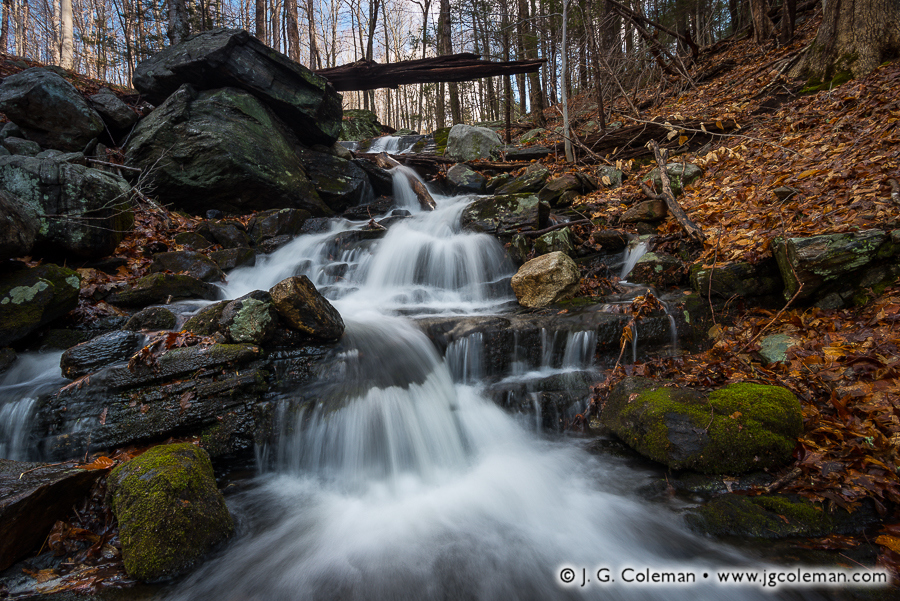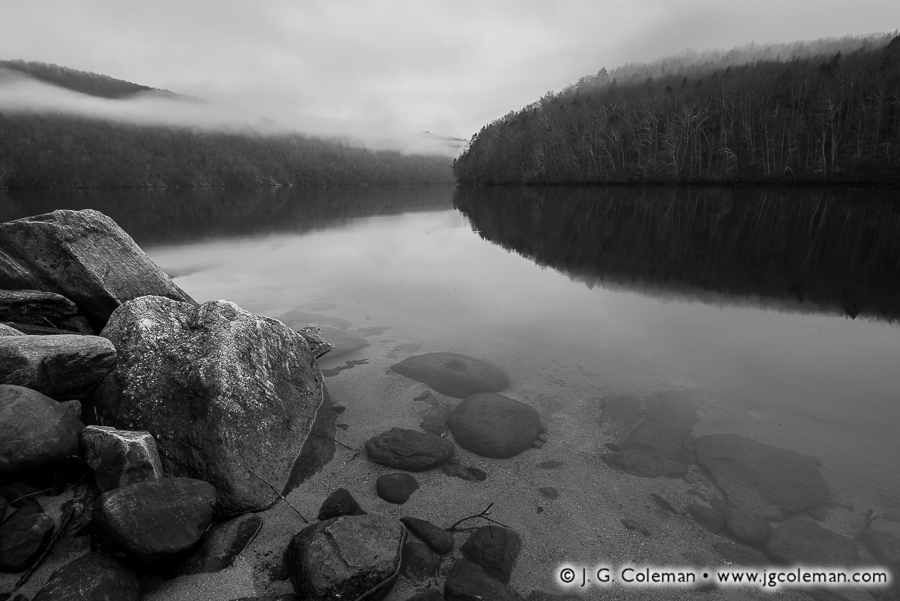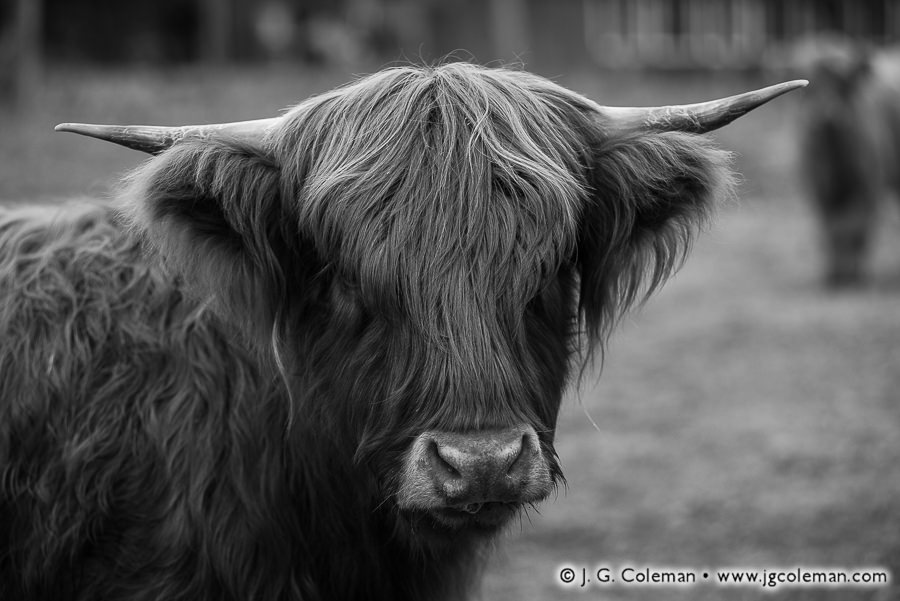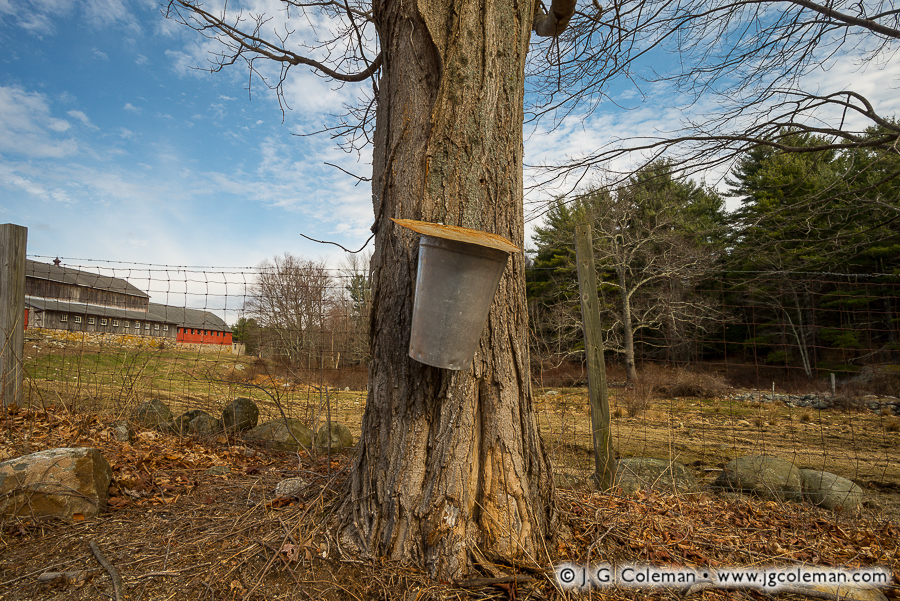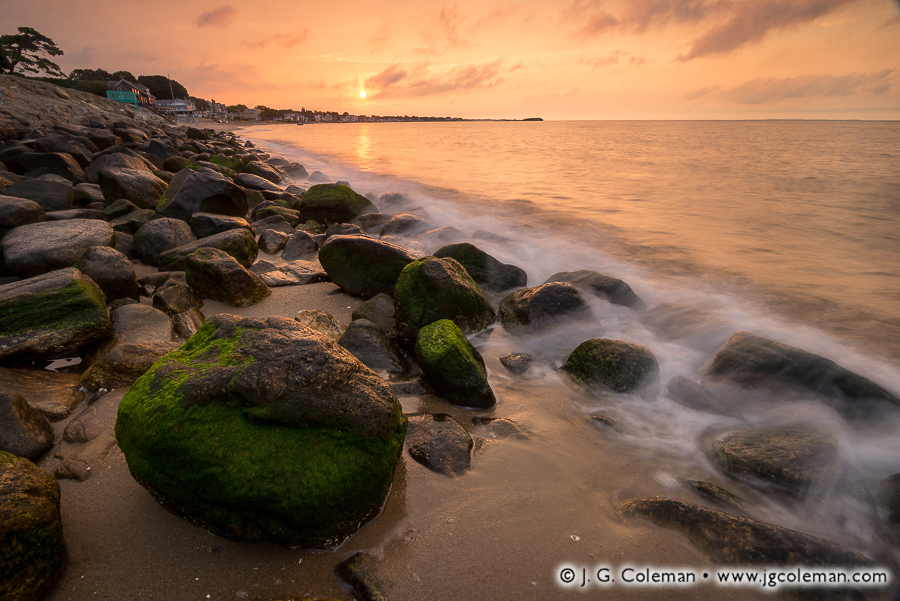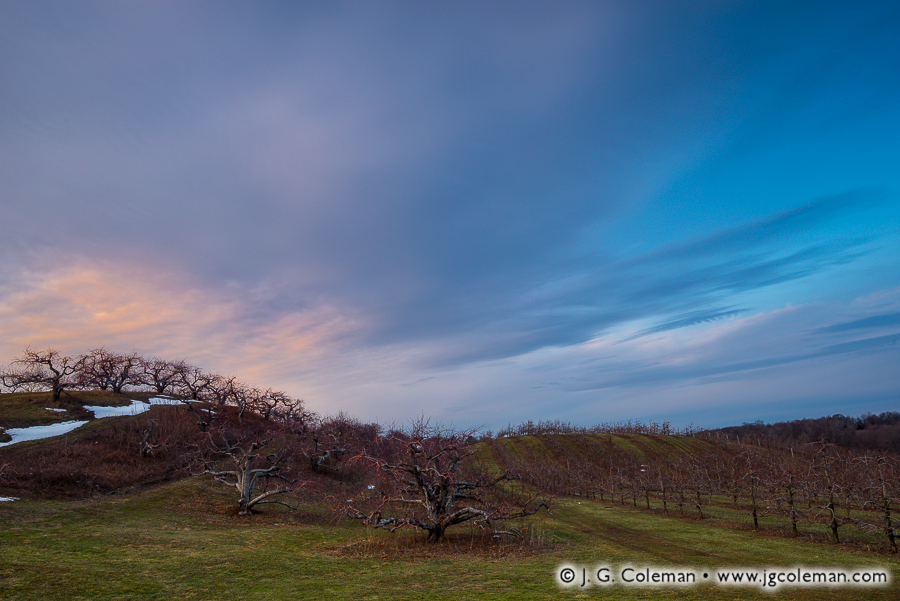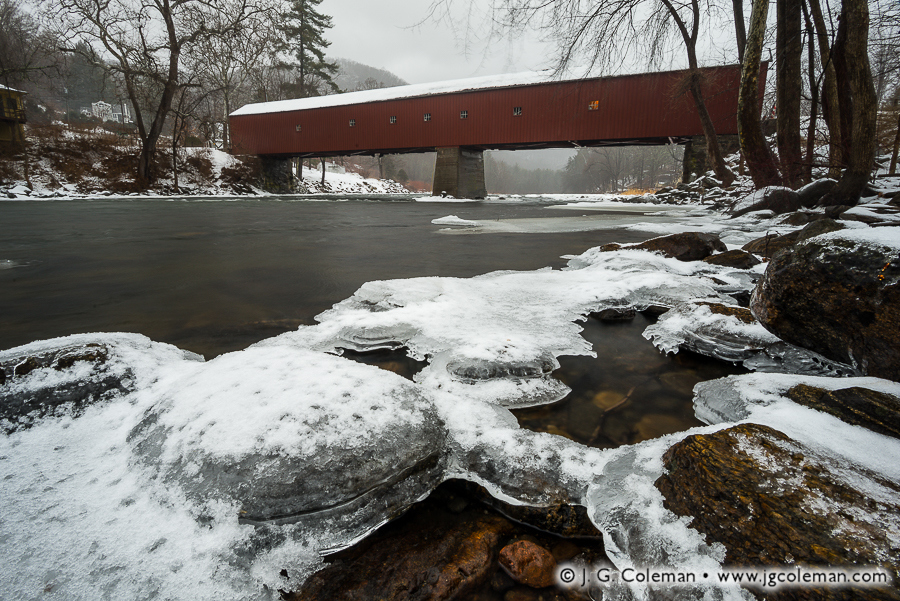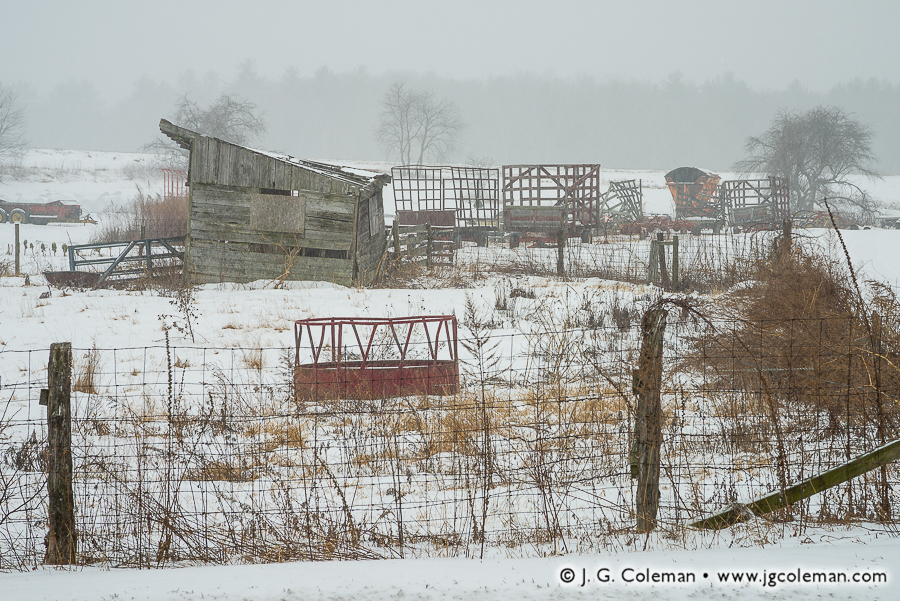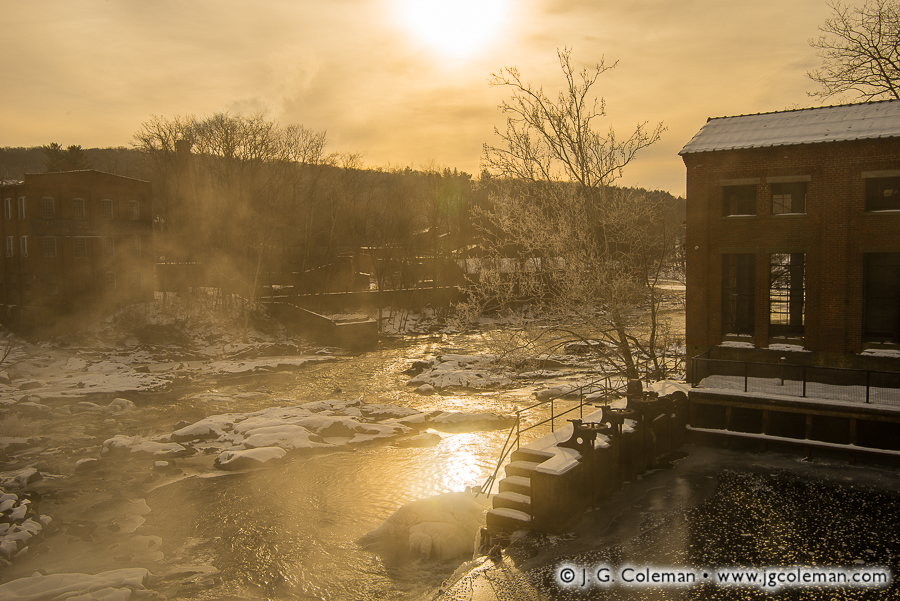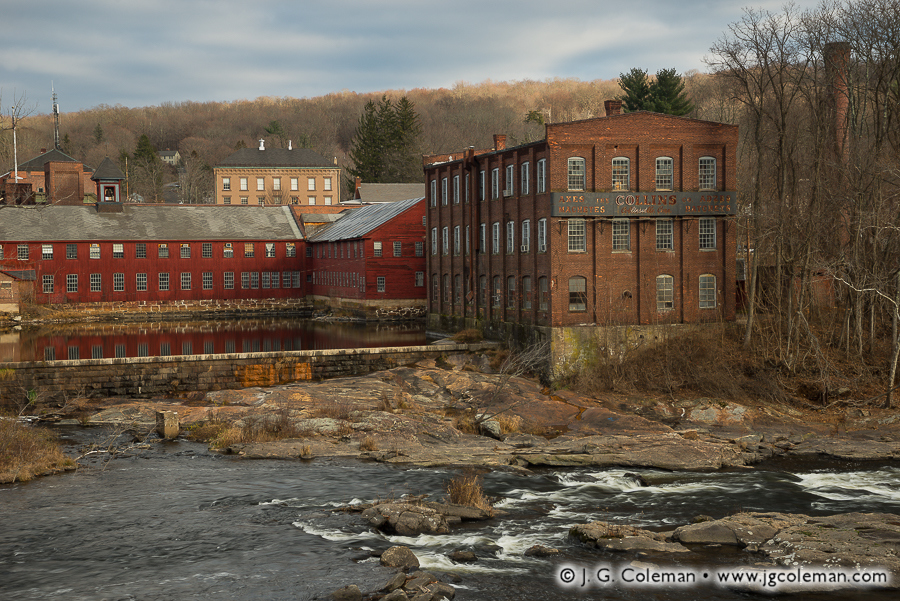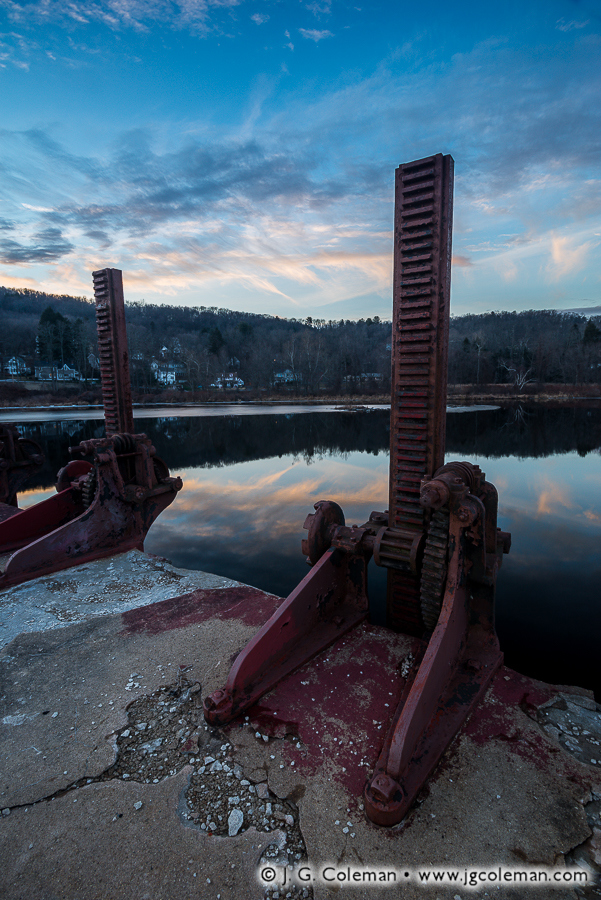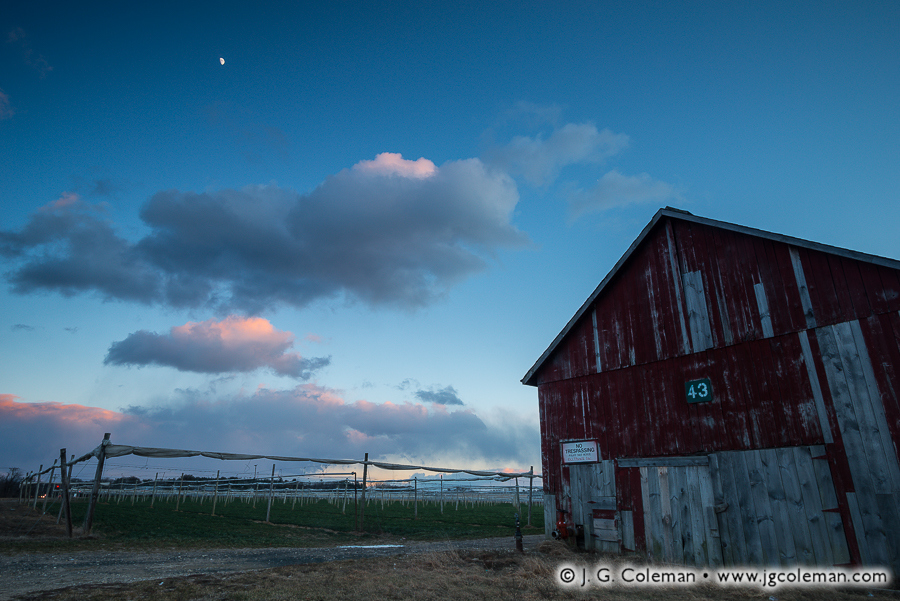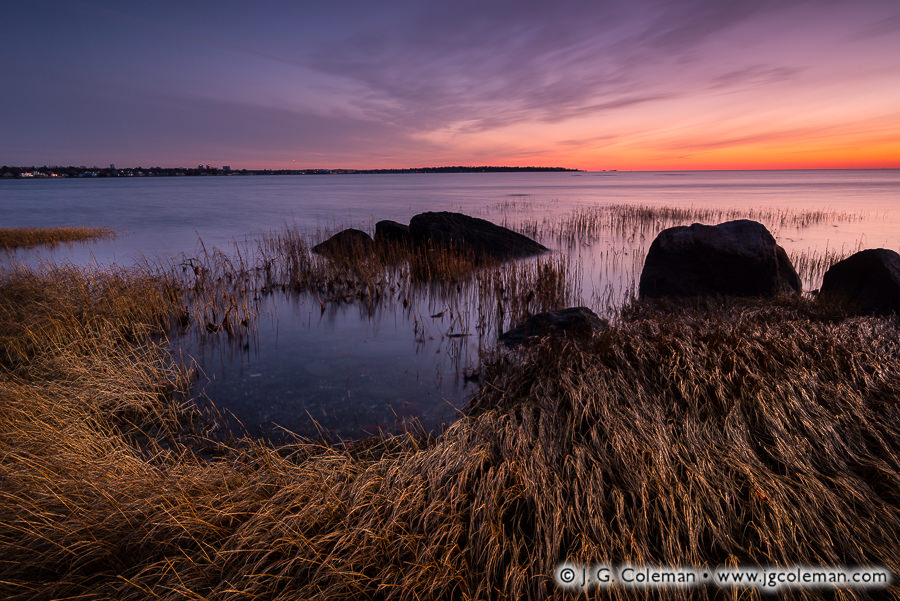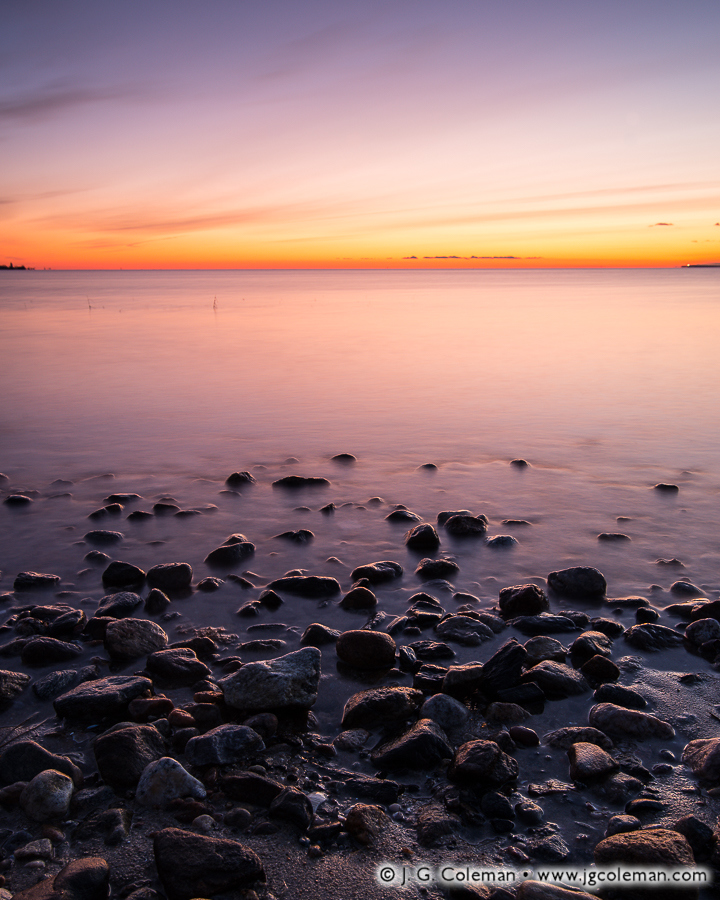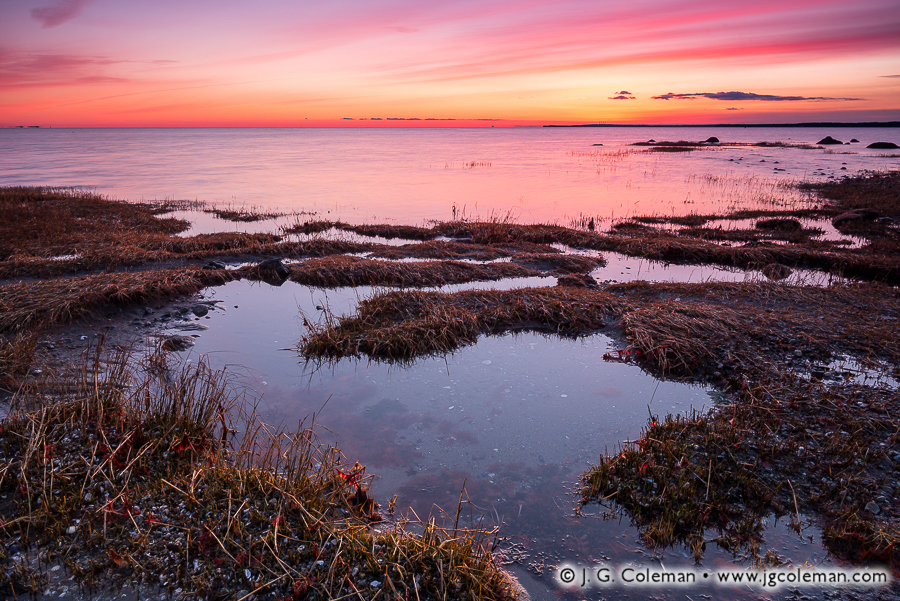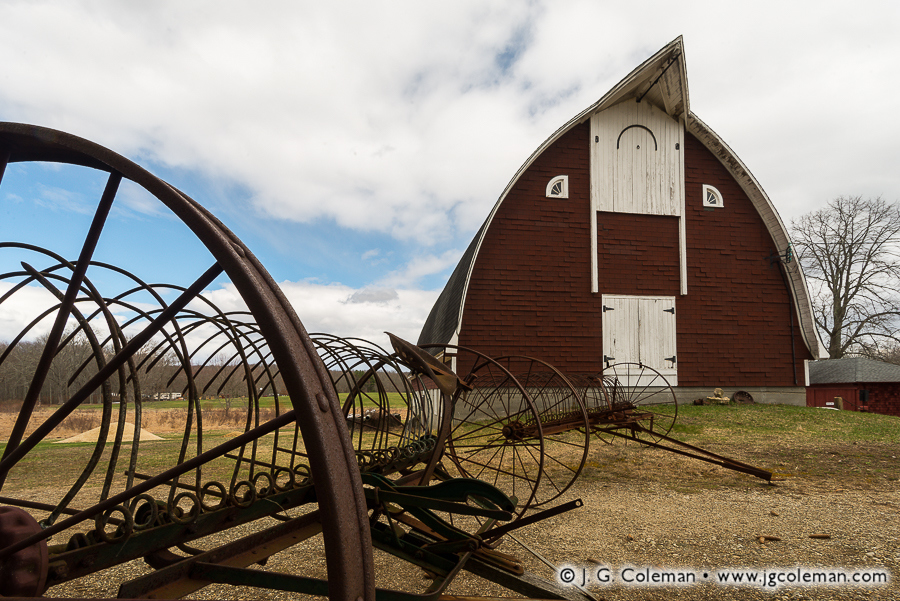
Old plows beside ornate round-roof barn
Colchester, Connecticut
© 2016 J. G. Coleman
With spring having arrived just about a week ago, it’s about that time for my on-going Yankee Farmlands project to make the change, as well! Next week’s addition to the series will be the first springtime farmland imagery this year. In the meantime though, I’ve released two final pieces from the very tail-end of winter.
In “Yankee Farmlands № 59” (at top), antique plows rest silently beside an elaborate, round-roof barn in Eastern Connecticut. With winter drawing to a close, the snows have melted away and soft clouds soar through the blue skies overhead.
If you were to briefly glance at this barn and expansive farm while driving by, it might be difficult to tell that it’s no longer an ordinary commercial operation. Roughly 16 years ago, the last of the previous owners donated the 170-acre farm –barns, machinery and all– for use as a unique “farm museum” where visitors can observe a broad range of both historical and modern farming equipment in use.
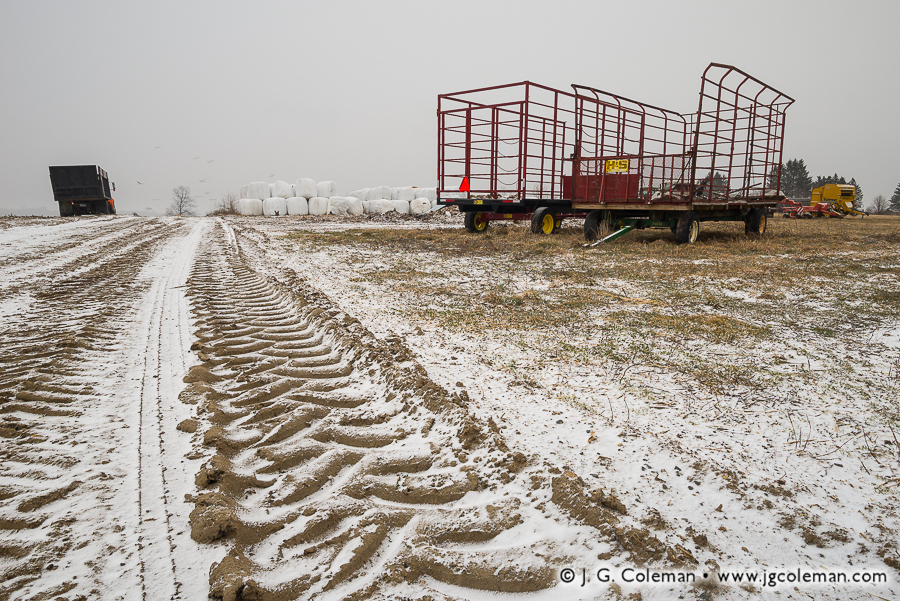
Snowy farm and hay wagons
Bethlehem, Connecticut
© 2016 J. G. Coleman
“Yankee Farmlands № 58” (immediately above) captures one of winter’s final blows to the Connecticut landscape. Tractor tracks impressed in frozen mud guide us past wagons and wrapped hay bales into a snowy expanse of farmland in Western Connecticut.
For all of the advancements in mechanization that have revolutionized farming over the centuries, the typical hay wagon has actually changed very little. After all, they are basically just cargo trailers for hauling hay… there’s only so much room for innovation beyond improving materials. If you could drop farmers from the early-1800s into a modern farm, machines like tractors, disc plows and balers would be completely foreign to them. Hay wagons might be among the few pieces of heavy equipment that they’d recognize fairly easily.
Purchase a Fine Art Print or Inquire About Licensing
Visit my landing pages for “Yankee Farmlands № 58” and “Yankee Farmlands № 59” to buy a beautiful fine art prints or inquire about licensing either of these images.
Want to See More?
Be sure to check out all of the work in my on-going Yankee Farmlands project, a journey throughout Connecticut’s countryside in celebration of the agricultural heritage of New England.



